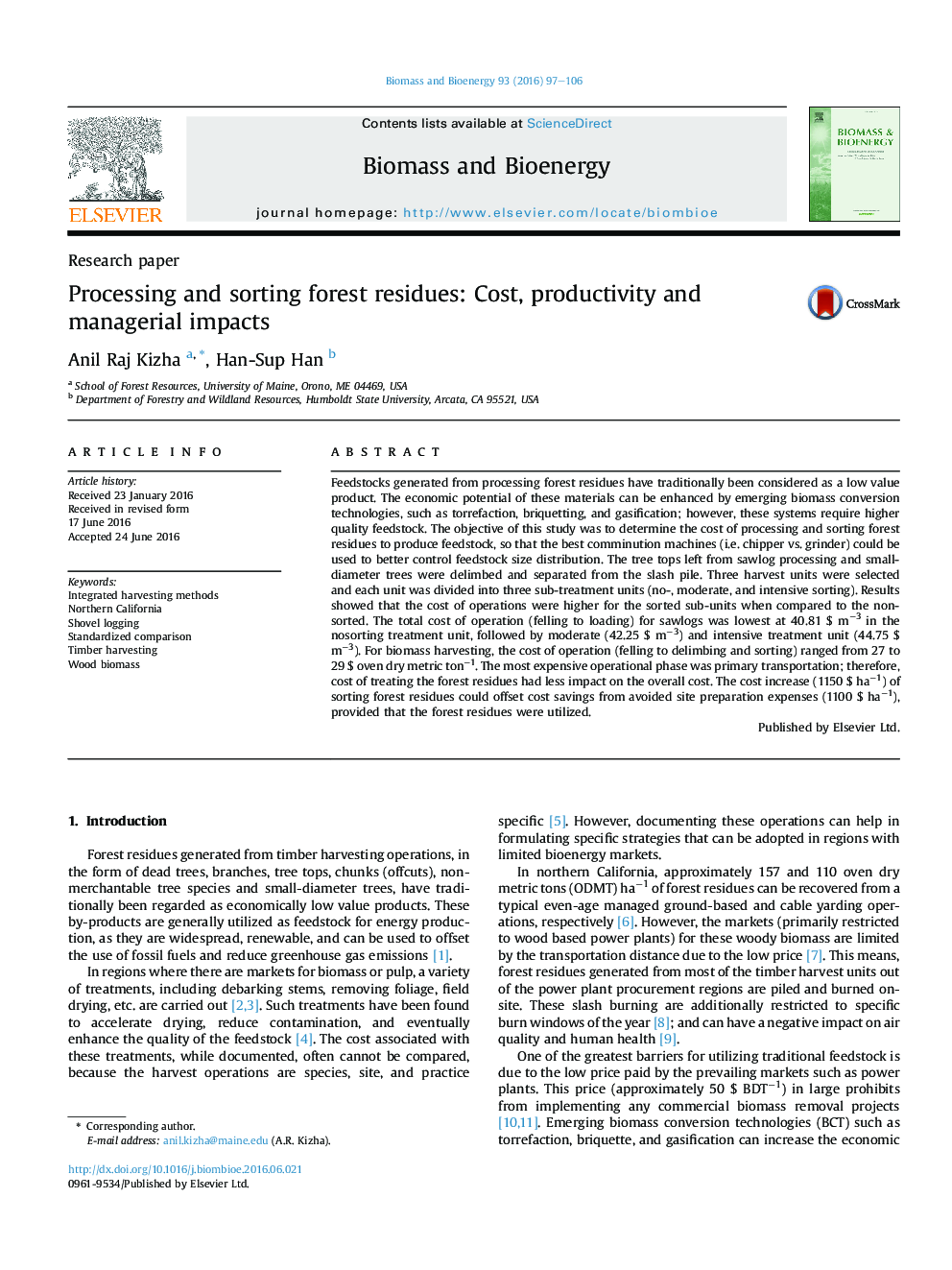| Article ID | Journal | Published Year | Pages | File Type |
|---|---|---|---|---|
| 7063166 | Biomass and Bioenergy | 2016 | 10 Pages |
Abstract
Feedstocks generated from processing forest residues have traditionally been considered as a low value product. The economic potential of these materials can be enhanced by emerging biomass conversion technologies, such as torrefaction, briquetting, and gasification; however, these systems require higher quality feedstock. The objective of this study was to determine the cost of processing and sorting forest residues to produce feedstock, so that the best comminution machines (i.e. chipper vs. grinder) could be used to better control feedstock size distribution. The tree tops left from sawlog processing and small-diameter trees were delimbed and separated from the slash pile. Three harvest units were selected and each unit was divided into three sub-treatment units (no-, moderate, and intensive sorting). Results showed that the cost of operations were higher for the sorted sub-units when compared to the non-sorted. The total cost of operation (felling to loading) for sawlogs was lowest at 40.81 $ mâ3 in the nosorting treatment unit, followed by moderate (42.25 $ mâ3) and intensive treatment unit (44.75 $ mâ3). For biomass harvesting, the cost of operation (felling to delimbing and sorting) ranged from 27 to 29 $ oven dry metric tonâ1. The most expensive operational phase was primary transportation; therefore, cost of treating the forest residues had less impact on the overall cost. The cost increase (1150 $ haâ1) of sorting forest residues could offset cost savings from avoided site preparation expenses (1100 $ haâ1), provided that the forest residues were utilized.
Related Topics
Physical Sciences and Engineering
Chemical Engineering
Process Chemistry and Technology
Authors
Anil Raj Kizha, Han-Sup Han,
